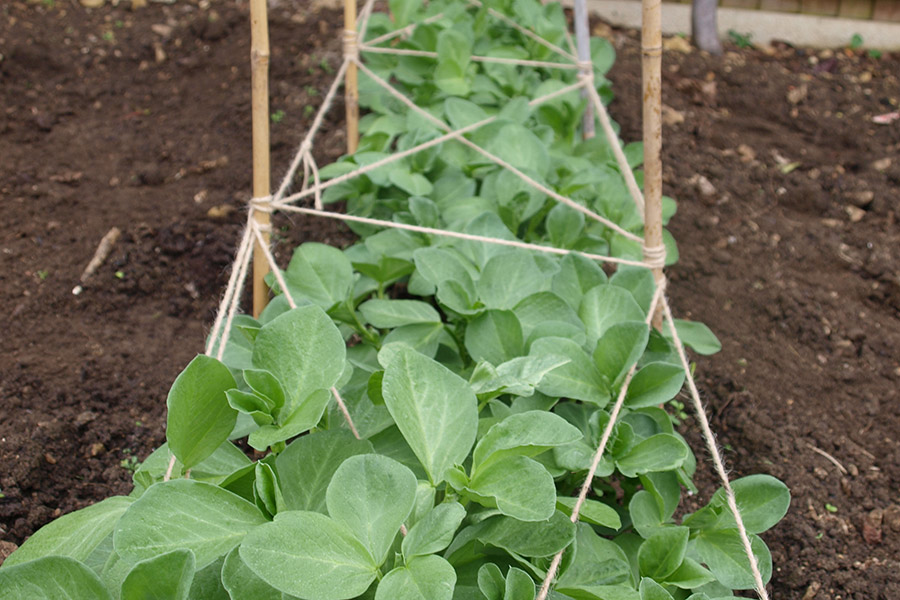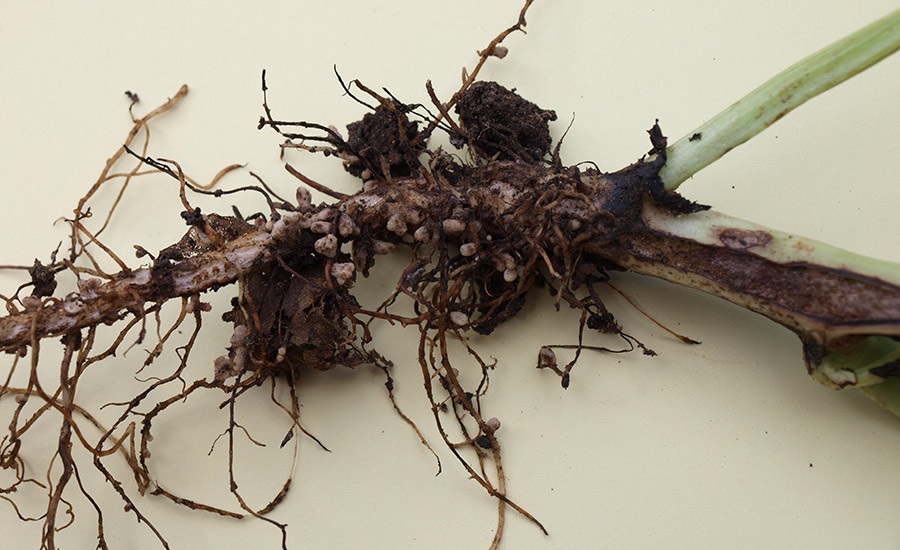Broad beans are an undemanding and valuable crop for all gardens. Probably originating in the Eastern Mediterranean and grown domestically since about 6,000BC, this plant was brought to Great Britain by the Romans.
Header image: a rich harvest of succulent broad beans for the table
Capable of tolerating most soil types and temperatures they provide successional fresh pickings from June to September. Early crops are grown from over-wintered sowings of cv Aquadulce. They are traditionally sown on All Souls Day on 2 November but milder autumns now cause too rapid germination and extension growth. Sowing is best now delayed until well into December. Juicy young broad bean seedlings offer pigeons a tasty winter snack, consequently protection with cloches or netting is vital insurance.
From late February onwards dwarf cultivars such as The Sutton or the more vigorous longer podded Meteor Vroma are used. Early cropping is promoted by growing the first batches of seedlings under protection in a glasshouse. Germinate the seed in propagating compost and grow the resultant seedlings until they have formed three to four prominent leaflets. Plant out into fertile, well-cultivated soil and protect with string or netting frameworks supported with bamboo canes to discourage bird damage.
Young broad bean plants supported by string and bamboo canes
More supporting layers will be required as the plants grow and mature. Later sowings are made directly into the vegetable garden. As the plants begin flowering remove the apical buds and about two to three leaves. This deters invasions by the black bean aphid (Aphis fabae). Winged aphids detect the lighter green of upper foliage of broad beans and navigate towards them!
Allow the pods ample time for swelling and the development of bean seeds of up to 2cm diameter before picking. Beware, however, of over-mature beans since these are flavourless and lack succulence. Broad beans have multiple benefits in the garden and for our diets. They are legumes and hence the roots enter mutually beneficial relationships with nitrogen fixing bacteria. These bacteria are naturally present in most soils. They capture atmospheric nitrogen, converting it into nitrates which the plant utilises for growth. In return, the bacteria gain sources of carbohydrates from photosynthesis.
Broad bean root carrying nodules formed around colonies of nitrogen fixing bacteria
Broad beans are pollinated by bees and other beneficial insects. They are good sources of pollen and nectar, encouraging biodiversity in the garden. Nutritionally, beans are high in protein, fibre, folate, Vitamin B and minerals such as manganese, phosphorus, magnesium and iron, therefore cultivating healthy living. Finally, they form extensive roots, improving soil structure, drainage and reserves of organic nitrogen. Truly gardeners’ friends!
Professor Geoff Dixon, author of Garden practices and their science (ISBN 978-1-138-20906-0) published by Routledge 2019.













